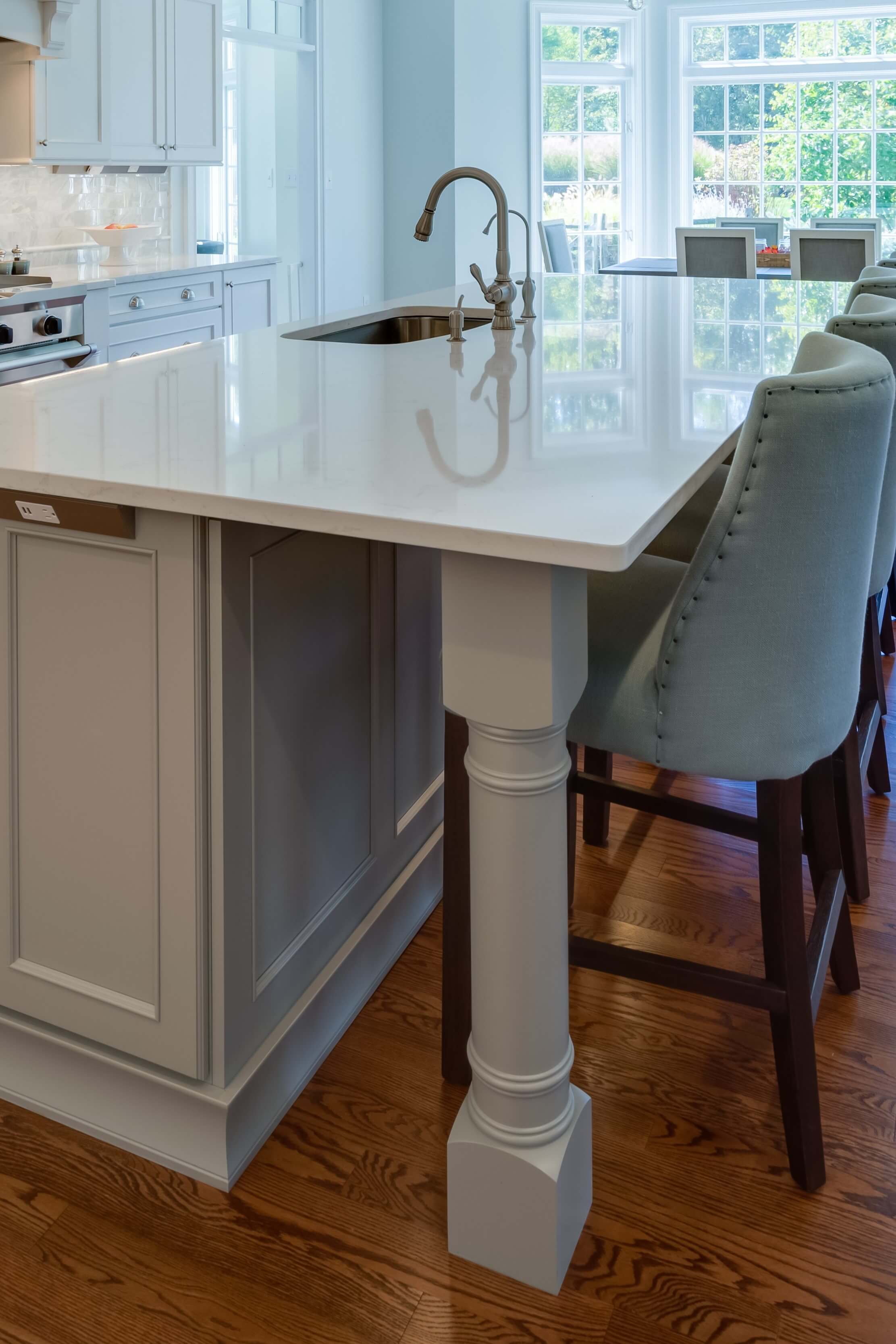Make Your Kitchen Island Stand Out with Custom-made Legs For Kitchen Island
Make Your Kitchen Island Stand Out with Custom-made Legs For Kitchen Island
Blog Article
A Guide to Picking the Perfect Legs For Cooking Area Island for Your Home
Picking the excellent legs for your cooking area island is a nuanced choice that influences both the performance and visual charm of this central space. As you take into consideration these components, it comes to be obvious that the ideal legs can transform not only the appearance of your cooking area however likewise its usability for years to come.

Understanding Cooking Area Island Legs
When selecting legs for a cooking area island, it's important to comprehend their visual and functional functions in the total style. The legs offer as an essential assistance system, ensuring security and resilience for the island, which usually functions as an office, eating area, or gathering spot. Therefore, the selection of material and building method need to be durable sufficient to hold up against day-to-day use and possible wear.
Along with their architectural responsibilities, legs contribute considerably to the island's visual charm. They can boost the cooking area's design, whether via traditional, contemporary, or eclectic designs. The height and proportion of the legs are also vital factors to consider; they need to integrate with the island's kitchen counter elevation while making certain comfy seating for those making use of the room.
In addition, the leg layout can affect the total circulation of the kitchen area. Open, ventilated leg styles can create a sense of lightness, while strong, significant legs might share an extra based and steady visual - Legs For Kitchen Island. Recognizing these aesthetic and functional facets will certainly assist home owners in making informed options that match their cooking area's layout and improve its functionality
Popular Styles and Materials
The selection of legs for a kitchen island incorporates a variety of prominent styles and materials, each offering one-of-a-kind features that can boost both performance and looks. Among the most desired styles are contemporary, rustic, and typical. Contemporary legs commonly feature sleek, minimalist layouts that emphasize simpleness and clean lines, making them perfect for modern-day kitchen areas. Rustic styles, on the various other hand, embrace all-natural elements and often display reclaimed timber or distressed coatings, adding heat and charm to the area. Traditional legs commonly display luxuriant details and workmanship, boosting timeless kitchen designs.

Height and Security Considerations

The legs of the cooking area island ought to give sufficient assistance, guaranteeing that the framework can withstand everyday usage without wobbling or moving. Product selection plays a substantial role in stability; steel legs, for instance, have a tendency to supply greater stamina contrasted to wood.
Matching Your Kitchen Area Visual
Choosing the ideal legs for your kitchen area island goes past performance; it additionally plays a substantial duty in the total visual of the room (Legs For Kitchen Island). When picking legs, take into consideration the layout style of your cooking area.
Shade is an additional essential variable. Legs that enhance or comparison with your island's surface area site here and surrounding cabinetry sites can create visual consistency or striking focal factors. Coupling dark timber legs with a light marble counter top can add deepness and passion. Furthermore, think about the finish of the legs; matte, glossy, or distinctive surfaces can dramatically influence the total feeling of the kitchen area.
Installation and Upkeep Tips
Setting up kitchen island legs needs cautious attention to information to guarantee both security and aesthetic allure. Begin by choosing a suitable place for your island, ensuring it is degree and has sufficient room for motion. If you are connecting the legs to a wall surface or using braces for added assistance, use a stud finder to find wall studs. Mark the placement of the legs properly before exploration.
When protecting the legs, use premium screws and, if required, wood glue for additional toughness. For metal legs, make certain that you are utilizing proper anchors and devices to stop damage to your floor covering. It is advisable to look for levelness after installment, making changes as needed to prevent tottering.
Maintenance is just as vital for longevity - Legs For Kitchen Island. On a regular basis click to investigate examine the legs for any indications of wear or loosening, specifically in high-traffic locations. Tidy the legs with an ideal cleaner, avoiding abrasive materials that may scratch the surface. For wooden legs, consider applying a wood conditioner periodically to maintain their finish. By following these installation and maintenance suggestions, you can guarantee that your kitchen area island legs stay both visually appealing and functional.
Verdict
In conclusion, picking the suitable legs for a kitchen island demands careful factor to consider of height, security, and aesthetic compatibility. Inevitably, thoughtful leg choice plays a crucial function in boosting both the practicality and layout of the kitchen room.
When selecting legs for a kitchen area island, it's important to comprehend their visual and functional functions in the total design. Open, airy leg designs can develop a sense of agility, while strong, substantial legs may share a much more based and steady aesthetic. The legs of the cooking area island should supply ample support, guaranteeing that the framework can stand up to daily use without shifting or wobbling.Setting up cooking area island legs calls for careful focus to detail to guarantee both stability and visual allure.In verdict, selecting the suitable legs for a kitchen island necessitates careful consideration of height, stability, and aesthetic compatibility.
Report this page